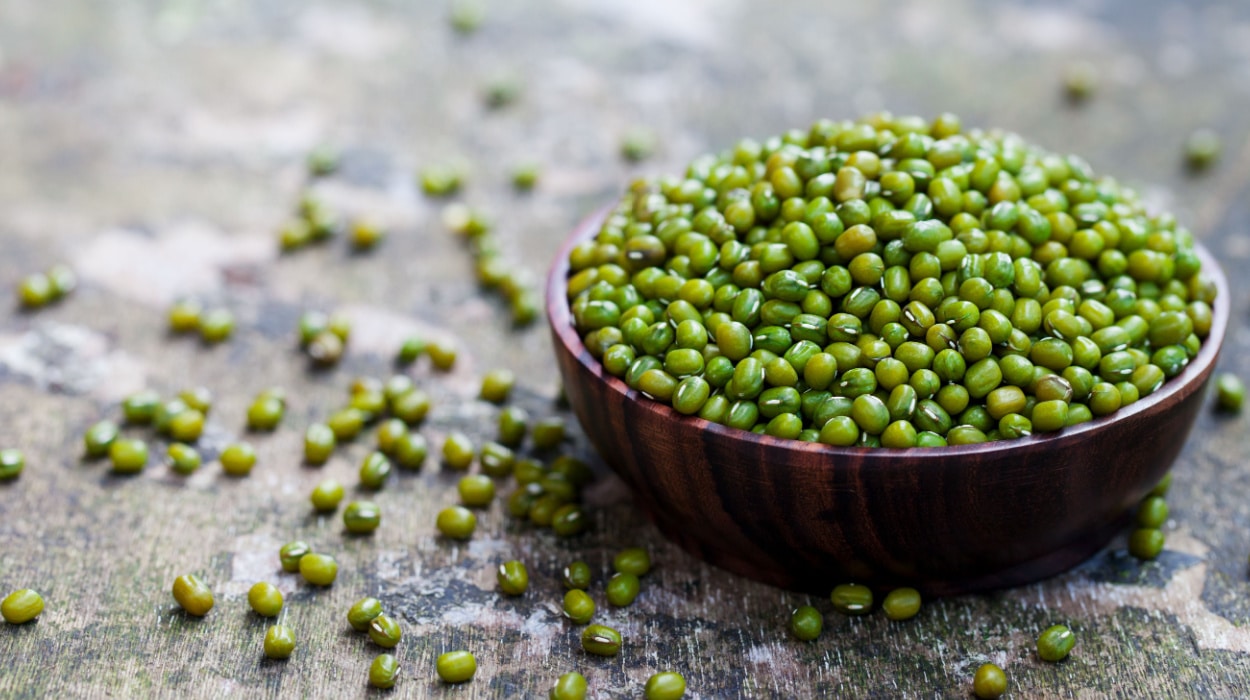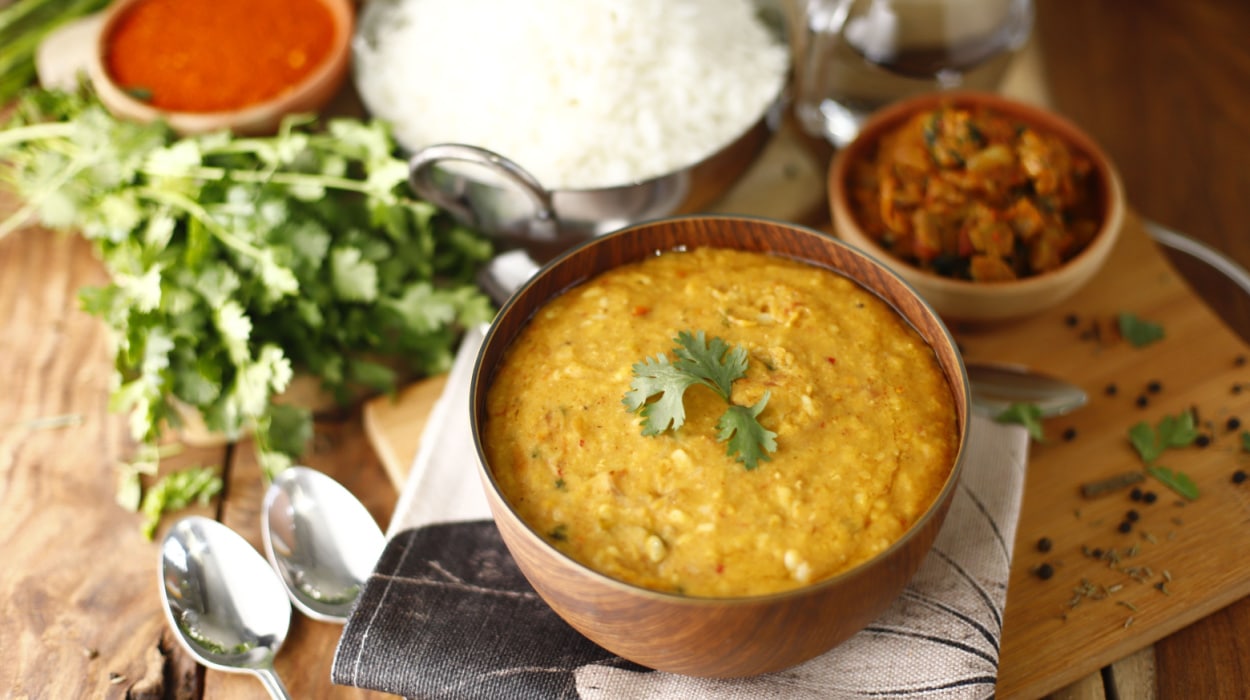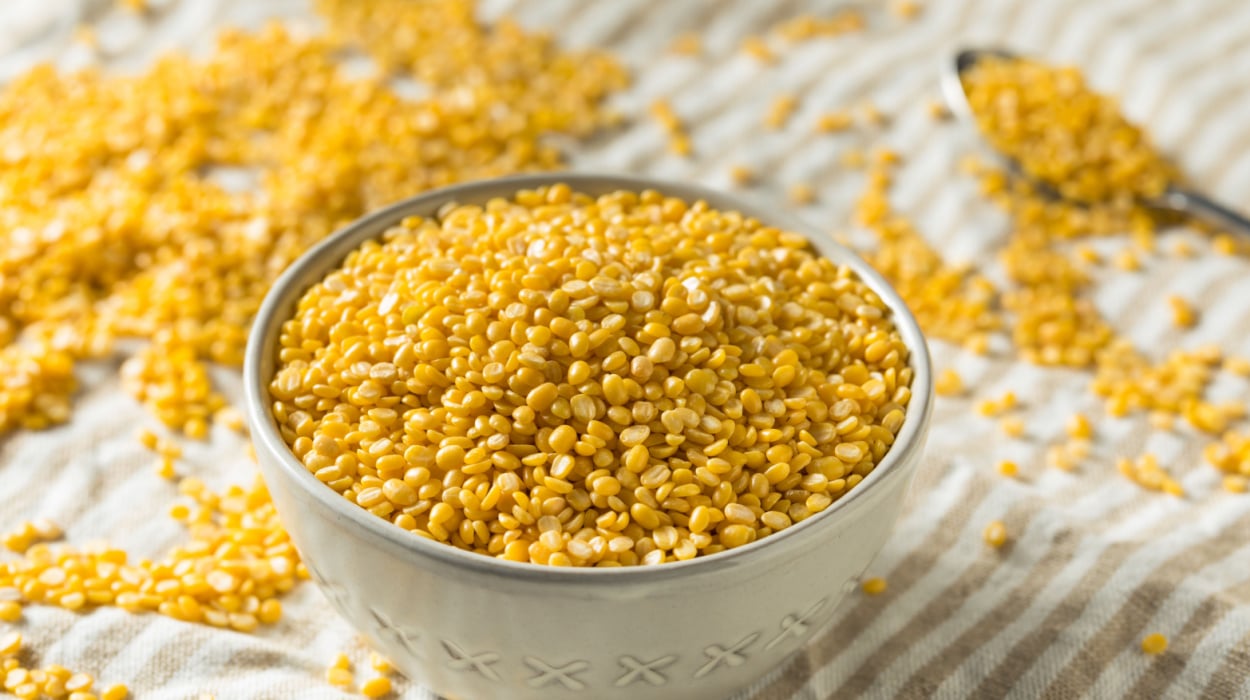Starting a ketogenic diet is a major lifestyle change for most people. Not only does it involve giving up on delicious carbohydrate-rich foods such as pastries and sweets, but a keto novice also has to adjust to the new flavors and textures of the new diet’s dishes. However, not all food eaten in a normal diet has to change. For those who enjoy Indian cuisine, they may ask: “Can we eat moong dal on a keto diet?”
Luckily, moong dal is an excellent choice for keto dieters, as long as you choose your recipes carefully. Let’s learn how to incorporate moong dal into your keto diet!
Is Moong Dal Keto Friendly?
Moong dal can be enjoyed as a part of a low-carb keto diet with careful planning. A typical keto diet restricts carbohydrates to at most 50 grams per day.[1] This limit is important because the keto diet’s goal is to keep the body in ketosis, a process of burning fat for energy when carbohydrates are insufficient.
One serving of moong dal contains 30 grams of carbohydrates. Therefore, it needs to be added in small amounts or paired with other low-carbohydrate foods. By doing this, you can benefit from the nutrients in moong dal without going out of ketosis.
Can We Eat Moong Dal In A Keto Diet?
Sprout Moong dal is a highly nutritious plant that has been shown to prevent chronic disease[2] and improve overall health. To determine if a keto diet is right for you, here is an article that discusses the pros and cons of a keto diet.
If you want to eat an Indian keto diet, you can use moong dal or sprouted moong dal. While moong dal has more carbohydrates than animal protein, its high fiber, protein, and mineral content makes it an equally healthy option.
If you are on a ketogenic diet, the best moong dal recipe is one that combines sprouted moong dal, which minimizes the carbohydrate content of the bean, with other high-fat and high-protein ingredients. To learn more about the keto diet for women, you can read this article as well.
What Is Moong Dal?

Moong dal is made from the mung bean, a bean native to India.[3] Specifically, moong dal describes a split mung bean. The mung bean is a staple food for many families in India. In addition, many vegans and vegetarians cook with mung beans, using them as a nutritious replacement for meat.
Moong dal is a high-protein food with a lot of fiber, making it a great choice if you are eating a low-carb or keto diet for weight loss.
100 grams of raw mung beans[4] include:
- Calories – 347 kCal
- Fat – 1.2 grams
- Protein – 24 grams
- Carbohydrates – 63 grams
- Significant amounts of magnesium, iron, vitamins C and B6, potassium, and calcium
However, after sprouting and/or cooking, the nutritional values significantly decrease. Moong dal can be eaten cooked or raw. For the most nutritional benefits, raw mung beans are the best option.
5 Ways To Eat Moong Dal While On Keto

While you may not find it on a typical keto diet foods list, there are many ways to incorporate moong dal as part of a nutritious ketogenic diet. Here are some delicious keto moong dal recipes that you can try.
Moong Dal Dosa
The dosa is a super easy moong dal recipe. To make a keto dosa, simply grind up your moong dal, add your favorite flavorings such as ginger, sea salt, or cumin, and use a blender with some water to make a paste.
Pour the paste into a skillet, similar to how you would make a crepe or pancake. When the paste becomes golden brown, your dosa is ready to eat!
You can add fillings to your dosa such as eggs, cottage cheese, or chutney. Make sure you choose high-fat fillings for your keto dosa.
Halwa
When you are craving something sweet, you can make yourself a moong dal halwa. Halwa is a dessert similar to pudding but with a nutritious moong dal base.
Depending on your carb allotment for the day and serving size, you may have to replace any sugar in the halwa with a different type of sweetener or use less of it. A popular keto sugar substitute is the monk fruit sweetener.
Soup
Almost any kind of soup that calls for lentils or beans can be made with moong dal instead. A soup full of moong dal, vegetables, oil, and broth will make a delicious low-carb meal that is sure to keep you satisfied for hours.
Tadka
Tadka is an Indian cooking technique where whole or ground spices are roasted in ghee or oil to bring out their flavors. Almost any spice can be used to make a tadka. Simply roast your favorite flavorings and mix them into your ground moong dal.
Most moong dal tadka recipes are served over rice or other grains. To use moong dal tadka in a keto diet, you can try pouring it over cauliflower rice, mushroom rice, hemp seeds, or cabbage rice.
Sprouted Moong Dal Salad
To obtain a fresher, crunchier taste from moong dal, you can try sprouting it. You may wonder, in a keto diet, can I have sprouted moong dal? If so, how many grams? The short answer is that yes, sprouted moong dal is keto-friendly. Each cup of sprouted moong dal contains 6.2 grams of total carbs, which can easily fit into your daily carbohydrate limit while on a keto diet.
You can start sprouting your moong dal by rinsing and soaking your beans in fresh water overnight. Then, wrap them in a moist muslin cloth or cotton cloth and let them sit for one to two days. When you see little white tails growing out of the fabric, your moong dal sprouts are ready.
To cook, simply toss your sprouted moong dal in a green salad with olive or coconut oil, and add in any other ingredients and toppings that you like.
Alternatives To Moong Dal For A Keto Diet
While there are many ways to enjoy moong dal dosa or keto moong dal soup, sometimes you just need more variety. Once you have started cooking with moong dal sprouts or have finally perfected your keto dosa, you can continue the keto food exploration by finding moong dal alternatives to modify your recipes with.
One of the easiest ways to add some variety to your keto diet is to subscribe to the best keto meal delivery service available for your budget and preferences. These delivery services offer many alternatives and unique recipes that you may not be adventurous enough to try on your own.
Another option to consider is supplements. Because of the non-traditional nutrition demands of keto, it may be hard to meet all the requirements[5] every day. Here are the Keto Charge reviews that can be beneficial to your diet planning.
If you are feeling brave in the kitchen, you can try some of these substitutes for moong dal in your keto diet.
- Adzuki Beans.
- Lentils.
- Pinto Beans.
- Chickpeas.
- Snow Peas.
- Black Eyed Beans.
Just like moong dal, many of these alternatives may contain high amounts of carbohydrates as well. Remember to always review the nutrition facts about each ingredient and ensure that you are staying within the carbohydrate limits of your keto diet as you cook.
Overall, the keto diet provides many health benefits but requires careful planning. If you are wondering how long you can stay on a keto diet, here is a guide for your consideration.
Conclusion
Moong dal adds wonderful variety and flavor to your keto diet meal plans. These beans have plenty of fiber and protein, and a relatively low net carb content. In addition, the sprouts of this split mung bean provide lots of essential nutrition to keep you healthy.
There are hundreds of keto meals that incorporate moong dal, including keto dosas, halwa, soups, and salads. Each of these meals can be made by following one of many different recipes, allowing you to have some variety. Additionally, you can further vary your recipes by experimenting with moong dal alternatives in your existing recipes. Bon appetit!
Frequently Asked Questions
Moong dal starts as mung beans native to India. They are a high protein, high fiber food often used to make dosas.
Moong dal can be eaten as part of a low-carb diet. One serving has about 30g of carbohydrates. Because of its high fiber content, which you subtract from the total carbs, the net carbs in moong dal are low. Many keto-friendly recipes contain moong dal or moong dal sprouts.
Raw, sprouted moong dal has the most fiber and nutrients. Cooking moong dal in coconut oil or olive oil is another healthy way to enjoy moong dal as part of an Indian keto diet.
Moong dal and its sprouts are high in nutrients and low in calories. These beans also contain lots of fiber and protein, meaning they will keep you full for a long time. Even if you are not eating a ketogenic diet, moong dal can help you with weight loss.
Keto dosas can be filled with cottage cheese, eggs, ghee, veggies, meat, or curry. Dosas are sometimes described as bitter, so add as many spices and flavorings as you want to make it something you will enjoy.
You could eat keto moong dal meals every day if you wish, but your body and your mind should get a wide variety of foods, especially when you are following a strict eating plan like the keto diet.
 Expert's opinion
Expert's opinion
